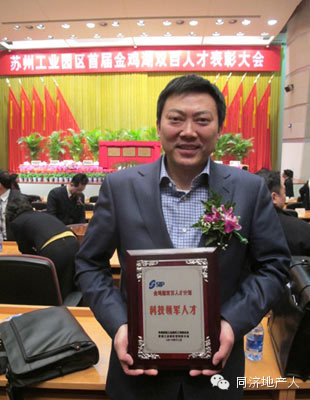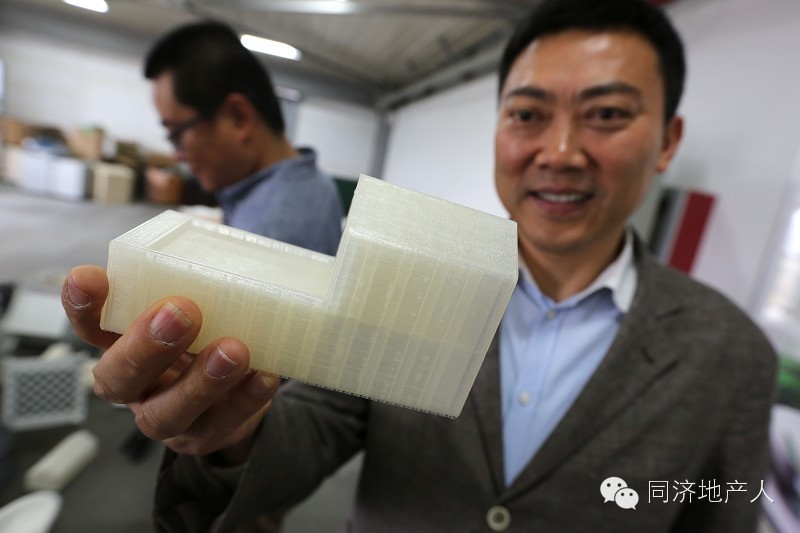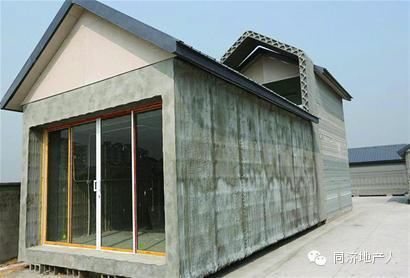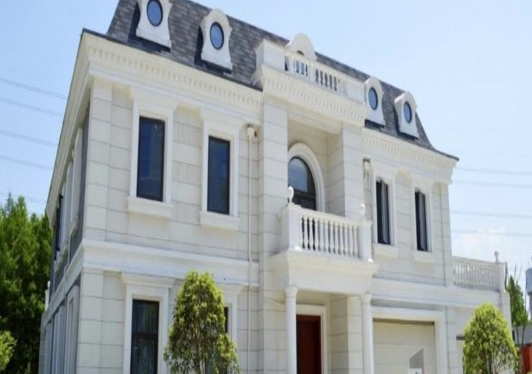Tongji university real estate industry alumni association --- public lecture
Tongji university real estate industry alumni association --- public lecture
Yingchuang & Tongji --- 3D printing team of 10 villa projects in Zhangjiang high-tech park in Shanghai
The organizers: Tongji university real estate industry alumni association
Honored guest: Ma Yihe, president, general manager and engineer of Shanghai Yingchuang decoration design engineering Co.,Ltd
Organizer: Study student union of tongji university student union, Tongji university college of civil engineering
Supporter: Tongji university alumni association of economics and management, Tongji green building society
Time: May 16, 2014 (Friday) 19:30
Address: 101 report hall, civil engineering college, Tongji university

Honored guest & Team introduction
Ma Yihe: He was graduated from Wuhan university of engineering, Well-known technical experts and entrepreneurs in the field of GRG and SRC in China. He is engaged in new building materials, especially gypsum based GRG materials, cement base material of SRC of the study, invention and production management work, with this field for more than 70 inventions and utility model patents. Now he is the president and general manager of Shanghai Yingchuang decoration design engineering Co.,Ltd

A true house to live in can be easily printed by a printer with 6.6 meters high, 10 meters wide and 150 meters long, , a special kind of "ink", a computer, a button. Making 3D printing architecture is no longer just a concept.
Yingchuang is a high-tech enterprise engaged in construction and 3D printing technology field for more than 12 years and self-developed 3D printing equipment, printing "ink" and continuous printing technology. The world's first 3D printed buildings are presented to the world.
3D printing architecture is no longer a dream
12 years ago, inventor Ma ( president of Yingchuang) started to research 3D printing of building decoration materials, from GRG (glass fiber reinforced gypsum) to the SRC (special glass fiber reinforced in cement), from the FRP (glass fiber reinforced plastic straight furniture) to Crazy Magic Stone. Seventy-seven national patents, more than 400 successful cases, have not only solved the problem of alien decorations in large buildings, especially theatres and stadiums, but also save much cost and get rid of the situation that we can only import these materials.
“Ink”---core weapon of 3D printing architecture
Russia has previously published 3D printed buildings, but their principle is to print pieces like lego pieces, and then assemble them into building walls that don't print the entire building. The Netherlands prints a landscape building called the mobius ring, which is assembled in several modules using sand and adhesives, and is expected to take 18 months. Currently all 3D printed buildings or architectural models are printed using sand and adhesives. Whether the printed building will be tested in strength and durability is an unknown, and no complete building is printed.The "printing ink" of the 3D printing building is mainly composed of high grade cement and glass fiber and is same with traditional construction.

3D printing architecture’s true mission is to save resource and protect environment
With the acceleration of industrialization and urbanization, the construction industry also developed rapidly. The accompanying construction waste is increasing, and the amount of construction waste in China is more than 1/3 of the total urban garbage.
As of 2011, China's urban solid household garbage inventory has reached 7 billion tons, which can be estimated to be 2.1 billion to 2.8 billion tons of construction waste, generating more than 300 million tons of construction waste each year. In the case of a simple stacking process, the country will add an additional construction area of about 30 billion square meters by 2020 with a standard of 500-600 tons per thousand square meters. This means that every year new construction waste will take up 150 million to 200 million square meters of land. What a surprise number!
China is in a period of rapid economic development and inevitably produces hundreds of millions of tons of construction waste every year. If it is not handled and utilized in time, it will have a negative impact on society, environment and resources. The random piling of construction waste not only creates safety hazards, but also causes serious pollution to water resources. This affects not only air quality but also land and soil quality.
Another core of the "inks" of the 3D printed building is the reuse of construction waste, including industrial waste and tailings. Yingchuang plans to establish 100 dreamworks within a 300km interval across the country. Construction waste, industrial waste and tailings are processed and separated by technology, making it a raw material for 3D printing of "inks". Let construction waste go back to the building, so that new buildings no longer generate construction waste.
Technique cooperation--- future development for 3D printing architecture
Technological innovation is the core of strategy and cooperation innovation is the only way. Xi Jinping stressed that "the implementation of innovation-driven development strategy determines the future destiny of the Chinese nation. The whole party and the whole society should be fully aware of the huge role of scientific and technological innovation, keen grasp the development trend of world science and technology innovation, grasp and use the opportunity of new technology revolution and industrial revolution, the innovation driven development as a major strategy for the future implementation.
Yingchuang is not a closed door car company. She is a company that has applied advanced technology widely in the real estate construction decoration industry and has a strong social responsibility and a sense of mission. In the future, Yingchuang will continuously establish close cooperation with architects, design institutes, developers and builders. The use of 3D printing technology in all areas of urban construction reduces construction energy consumption from 70% to below 30%. Let the city's construction waste, industrial refuse, tailings go back to the building. Let future buildings no longer generate construction waste. Let future construction workers do more decent jobs. Reduce construction costs by 50%. Let more people in the world can live in houses .
Yingchuang is committed to making the sky bluer, mountain greener and water cleaner!
About us
The alumni association of Tongji real estate industry is a non-profit community organized by Tongji university. The purpose of this association is to promote the exchange and communication between alumni, alumni and schools, alumni and other social groups through the establishment of various communication platforms.By creating the brand of the real estate alumni association of tongji university, it provides members with information, policies, financial and dynamic information support. By means of communication and activities, we will carry forward the fine tradition and humanistic spirit of Tongji university and reflect the social responsibility of real estate entrepreneurs.
Address: Room 1910, Tongji university complex building, No. 1239. Siping Road, Yangpu district, Shanghai
Application form: http://pan.baidu.com/s/1bngV3Kb
Phone: 021-65983211 / 65986755
E-mail: yangjun188@139.com
Wechat: bovyyang
Postcode: 200092





